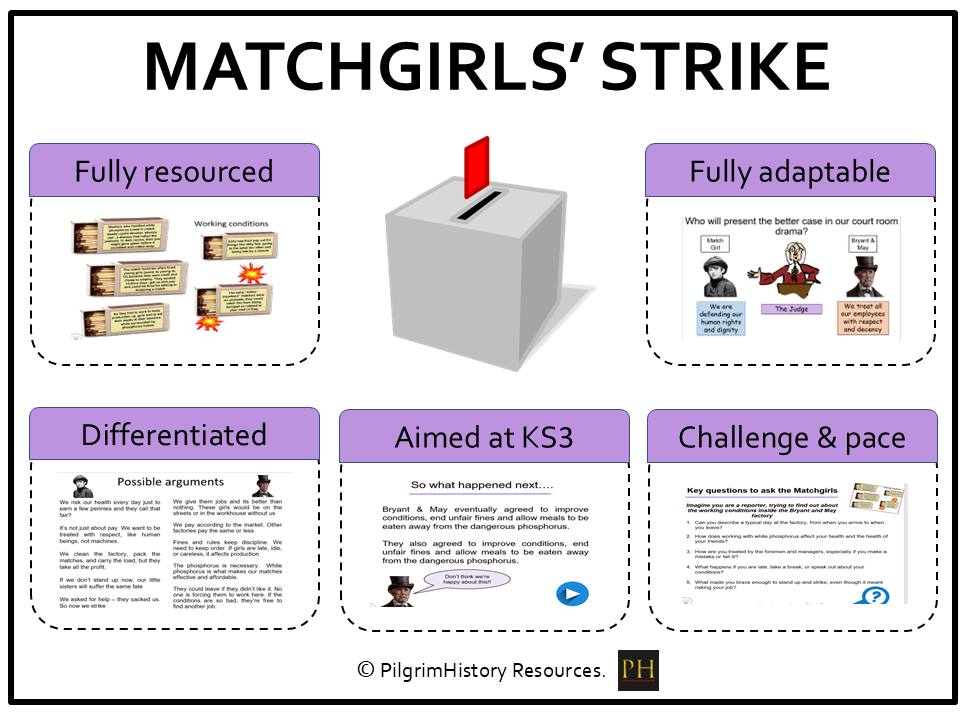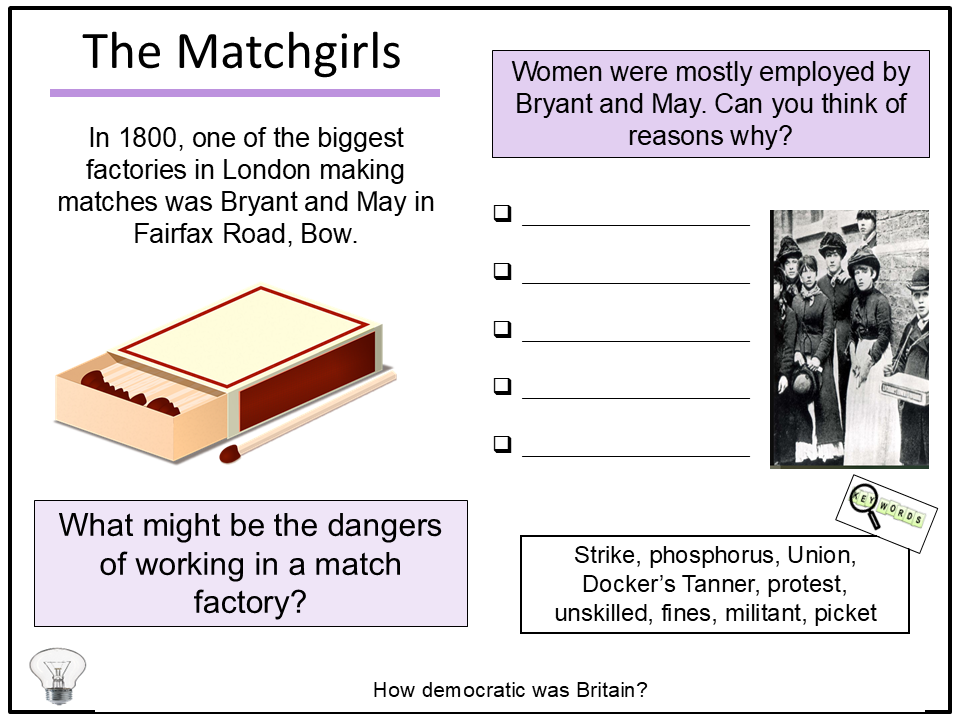


Bring Victorian history to life with this powerful, lesson on the inspiring Matchgirls Strike. Perfect for exploring industrial Britain, protest and reform, women’s history or trade union development.
Students will learn about the importance of the humble match, the everyday object that lit homes, fires and lamps across Victorian Britain.
The harsh, toxic conditions inside the Bryant and May match factory in London’s East End.
The role of Annie Besant, a reformer and journalist, in supporting and empowering the girls.
A balanced classroom debate with arguments for and against the strike, encouraging empathy, reasoning and critical thinking.
How the matchgirls defied the odds and won, changing the course of British labour history.
The lesson includes:
An engaging PowerPoint with striking visuals, key facts & discussion prompts
A mini-debate activity as students take on the roles of the matchgirls and factory owners,
Differentiated worksheets for comprehension, analysis and extended writing,
source extracts and source scholarship
Plenary quiz and reflection task to reinforce knowledge and encourage thinking
Why teachers will love this resource:
Fully planned and resourced. Just print or upload and teach
Builds core KS3 skills such as causation, consequence, interpretation and source analysis
Prepares students for GCSE themes like power, monarchy, Parliament, womens’ rights and the Industrial Revolution
Encourages critical thinking and balanced historical judgement
Something went wrong, please try again later.
This resource hasn't been reviewed yet
To ensure quality for our reviews, only customers who have purchased this resource can review it
to let us know if it violates our terms and conditions.
Our customer service team will review your report and will be in touch.